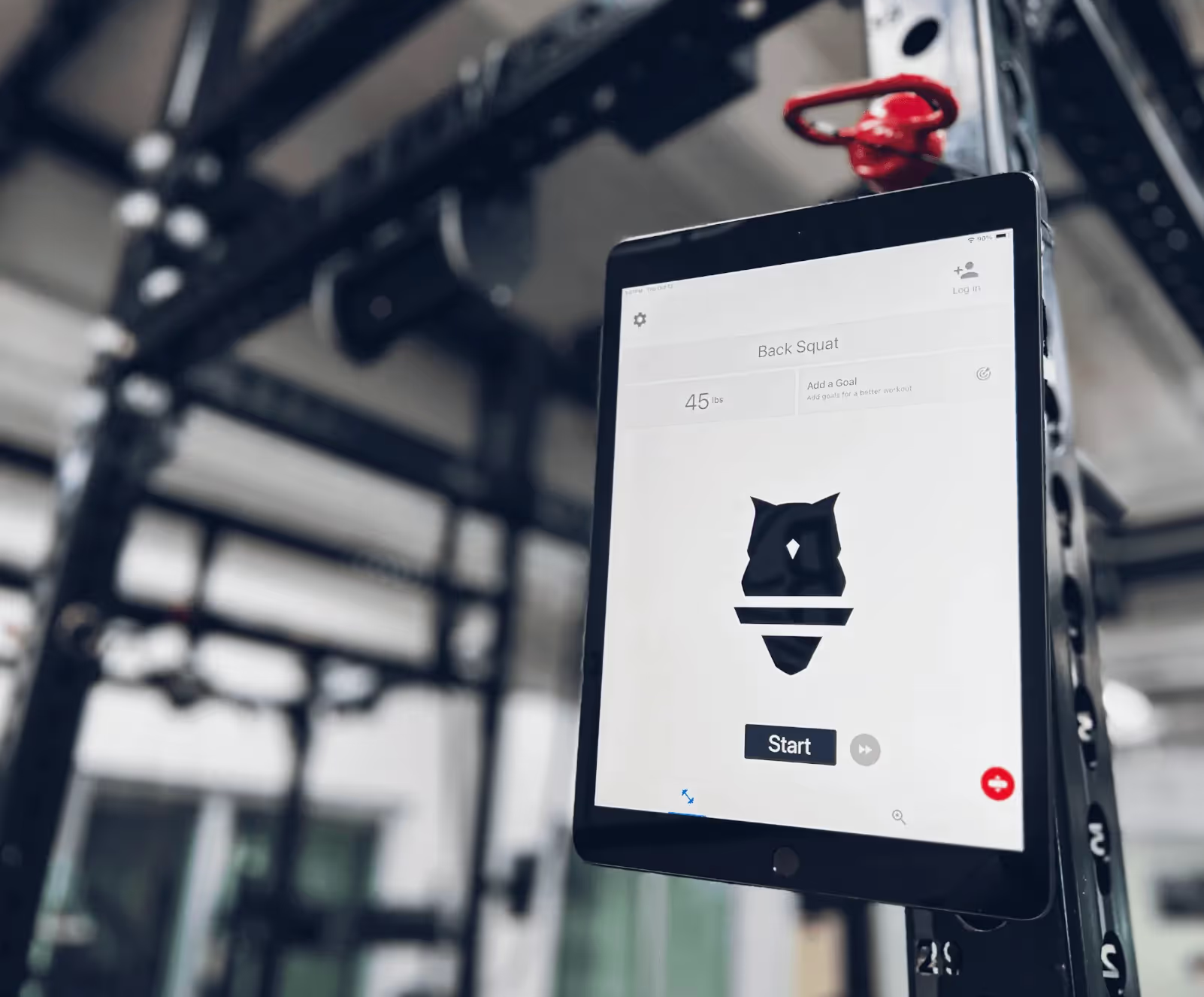The Benefits of VBT

Velocity-based training (VBT) is a training method that has gained popularity in the last twenty years, and for good reason. It is a highly effective way to train athletes and individuals looking to improve their performance. VBT is a training method that uses the speed of movement as the primary metric to determine the appropriate training load for an athlete or individual. In this blog post, we will discuss the benefits and importance of velocity-based training.
What is Velocity-Based Training (VBT)?
Velocity-based training is a training method that uses velocity as the primary metric to determine the appropriate training load for an athlete or individual. It involves measuring the speed at which an athlete lifts a weight or performs a movement and then adjusting the load accordingly. By doing so, it ensures that the athlete is always training at the appropriate intensity, which maximizes the benefits of the training.
The use of velocity as a training metric has gained popularity in recent years due to advancements in technology that have made it easier to measure and track an athlete's velocity. The technology used in VBT includes linear position transducers, accelerometer-based devices, and various software applications. These devices are used to measure the velocity of movement, which provides immediate feedback to the athlete and coach, enabling them to adjust the training load on the spot.
Benefits of Velocity-Based Training
Improves Performance
One of the primary benefits of velocity-based training is that it can improve an athlete's performance significantly. VBT enables athletes to train at the appropriate intensity, which ensures that they are training optimally to achieve their desired performance outcomes. By adjusting the training load based on an athlete's velocity, it ensures that the athlete is always pushing themselves to their limit, which is necessary for achieving improvements in performance.
Reduces Injury Risk
Another benefit of VBT is that it can reduce the risk of injury. By training at the appropriate intensity, VBT reduces the risk of overtraining or undertraining, which are two common causes of injury. Additionally, VBT provides immediate feedback on an athlete's performance, allowing coaches to adjust the training load to prevent injury. By identifying and correcting performance issues, coaches can help athletes train safely and prevent injury.
Provides Immediate Feedback
Another significant benefit of VBT is that it provides immediate feedback to the athlete and coach. The use of technology in VBT allows coaches to monitor an athlete's performance in real-time, which enables them to adjust the training load on the spot. By doing so, coaches can ensure that the athlete is always training at the appropriate intensity, which maximizes the benefits of the training.
Maximizes Training Efficiency
VBT also maximizes training efficiency. By training at the appropriate intensity, athletes can achieve maximum gains in the shortest amount of time possible. This is because training at the appropriate intensity allows for optimal muscle recruitment and adaptation, which is necessary for improving performance. Additionally, VBT allows coaches to adjust the training load on the spot, which saves time and ensures that athletes are not wasting their time training at the wrong intensity.
Individualizes Training
Another benefit of VBT is that it individualizes training. Every athlete is unique, and their training needs will vary depending on their performance goals, strengths, and weaknesses. VBT allows coaches to individualize training by adjusting the training load based on an athlete's velocity. This ensures that each athlete is training at the appropriate intensity for their individual needs, which maximizes the benefits of the training.
Importance of Velocity-Based Training
Individualization
The importance of VBT lies in its ability to personalize or individualize training. Every athlete is different and has unique needs. VBT allows coaches to individualize training by adjusting the training load based on an athlete's velocity. This ensures that each athlete is training at the appropriate intensity for their individual needs, which maximizes the benefits of the training. Personalization is essential because it ensures that athletes are not wasting their time training at the wrong intensity, which can be counterproductive and slow down progress.
Safety
Another important aspect of VBT is safety. Overtraining and undertraining can lead to injury and slow down progress. VBT ensures that athletes are training at the appropriate intensity, which reduces the risk of injury and maximizes the benefits of the training. By providing immediate feedback, coaches can adjust the training load to prevent injury, which is critical to the long-term success of an athlete.
Efficiency
Efficiency is also an important aspect of VBT. By training at the appropriate intensity, athletes can achieve maximum gains in the shortest amount of time possible. VBT allows coaches to adjust the training load on the spot, which saves time and ensures that athletes are not wasting their time training at the wrong intensity. This is critical for athletes who have limited time to train, such as those who are balancing training with work or school.
Objectivity
VBT also provides an objective measure of an athlete's performance. By using velocity as a training metric, coaches can monitor an athlete's progress objectively, which is essential for determining whether an athlete is making progress towards their performance goals. This is particularly important for athletes who are training for a specific event or competition, as they need to know whether they are making progress towards their performance goals.
Versatility
Finally, VBT is a versatile training method that can be used for a wide range of exercises and movements. VBT can be used for strength training, power training, and speed training, making it a useful tool for athletes in a variety of sports. Additionally, VBT can be used for both novice and advanced athletes, making it a versatile tool for coaches who work with athletes at different levels of skill and experience.
Conclusion
Velocity-based training is a highly effective training method that has gained popularity in recent years. VBT uses velocity as the primary metric to determine the appropriate training load for an athlete, which ensures that they are always training at the appropriate intensity. The benefits of VBT include improved performance, reduced injury risk, immediate feedback, maximized training efficiency, and individualized training. The importance of VBT lies in its ability to personalize training, promote safety, maximize efficiency, provide an objective measure of performance, and versatility. VBT is a versatile training method that can be used for a wide range of exercises and movements, making it a useful tool for athletes in a variety of sports. If you're looking to improve your performance or work with athletes to help them achieve their performance goals, VBT is a training method that is worth considering.
Read more about Perch here! And check out Product Videos here. And our support website here.
Back to basics? Review the origins of VBT and Strength Training!
Sources
1. Mann, B. (2015). The benefits of velocity-based training. Stack. Retrieved from https://www.stack.com/a/the-benefits-of-velocity-based-training
2. National Strength and Conditioning Association. (2021). Velocity-Based Training. Retrieved from https://www.nsca.com/education/articles/tsac-report/velocity-based-training/
3. Pareja-Blanco, F., Rodríguez-Rosell, D., Sánchez-Medina, L., Sanchis-Moysi, J., Dorado, C., & Mora-Custodio, R. (2017). Effects of velocity-based resistance training on young soccer players of different ages. The Journal of Strength & Conditioning Research, 31(5), 1321-1329.
4. Banyard, H. G., Nosaka, K., Haff, G. G., & Tsukamoto, T. (2017). Effects of the velocity of resistance exercise on muscle damage and muscle strength. Journal of Sports Sciences, 35(20), 1977-1982.
5. Comfort, P., Haigh, A., & Matthews, M. J. (2012). Are changes in maximal squat strength during preseason training reflected in changes in sprint performance in rugby league players?. The Journal of Strength & Conditioning Research, 26(3), 772-776.
6. Looney, D. P., Kraemer, W. J., Joseph, M. F., Comstock, B. A., Denegar, C. R., & Flanagan, S. D. (2016). Electromyographical and kinetic analysis of traditional, chain, and elastic band squats. Journal of Strength and Conditioning Research, 30(9), 2579-2587.

Start Gathering Data With Perch Today!
Reach out to us to speak with a representative and get started using Perch in your facility.








































































.avif)

































